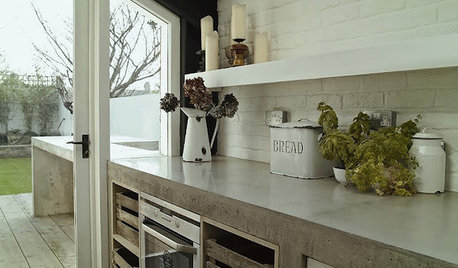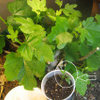Elemental Magnesium
laidbackdood
13 years ago
Related Stories

REMODELING GUIDESMaterials: The Advantages of a Metal Roof
Metal reigns in roofing style, maintenance and energy efficiency
Full Story
LANDSCAPE DESIGNNatural Swimming Pools: More Beauty, No Chemicals
Keep your skin and the environment healthy with a pool that cleans itself, naturally
Full Story
BEFORE AND AFTERSReader Project: California Kitchen Joins the Dark Side
Dark cabinets and countertops replace peeling and cracking all-white versions in this sleek update
Full Story
KITCHEN COUNTERTOPSKitchen Counters: Concrete, the Nearly Indestructible Option
Infinitely customizable and with an amazingly long life span, concrete countertops are an excellent option for any kitchen
Full Story
DECORATING GUIDESSo Your Style Is: Green
Way beyond a hue on a paint chip, green means a healthy home with a unique style designed around sustainability
Full StorySponsored
Zanesville's Most Skilled & Knowledgeable Home Improvement Specialists




fruitnut Z7 4500ft SW TX
tapla (mid-Michigan, USDA z5b-6a)
Related Discussions
Osmocote...how often?
Q
What is magnesium stearate
Q
Question About Sick Citrus(es)
Q
Hi Al, Tapla, quick question for you)
Q
laidbackdoodOriginal Author
tapla (mid-Michigan, USDA z5b-6a)
laidbackdoodOriginal Author
tapla (mid-Michigan, USDA z5b-6a)
laidbackdoodOriginal Author
tapla (mid-Michigan, USDA z5b-6a)
tantanman
meyermike_1micha
laidbackdoodOriginal Author
laidbackdoodOriginal Author
laidbackdoodOriginal Author
laidbackdoodOriginal Author
laidbackdoodOriginal Author
hoosierquilt USDA 10A Sunset 23 Vista CA
meyermike_1micha
hoosierquilt USDA 10A Sunset 23 Vista CA
laidbackdoodOriginal Author
timrod98
meyermike_1micha
laidbackdoodOriginal Author
laidbackdoodOriginal Author
meyermike_1micha
tapla (mid-Michigan, USDA z5b-6a)
laidbackdoodOriginal Author
laidbackdoodOriginal Author
johnmerr
Brad Edwards
Brad Edwards
tapla (mid-Michigan, USDA z5b-6a)